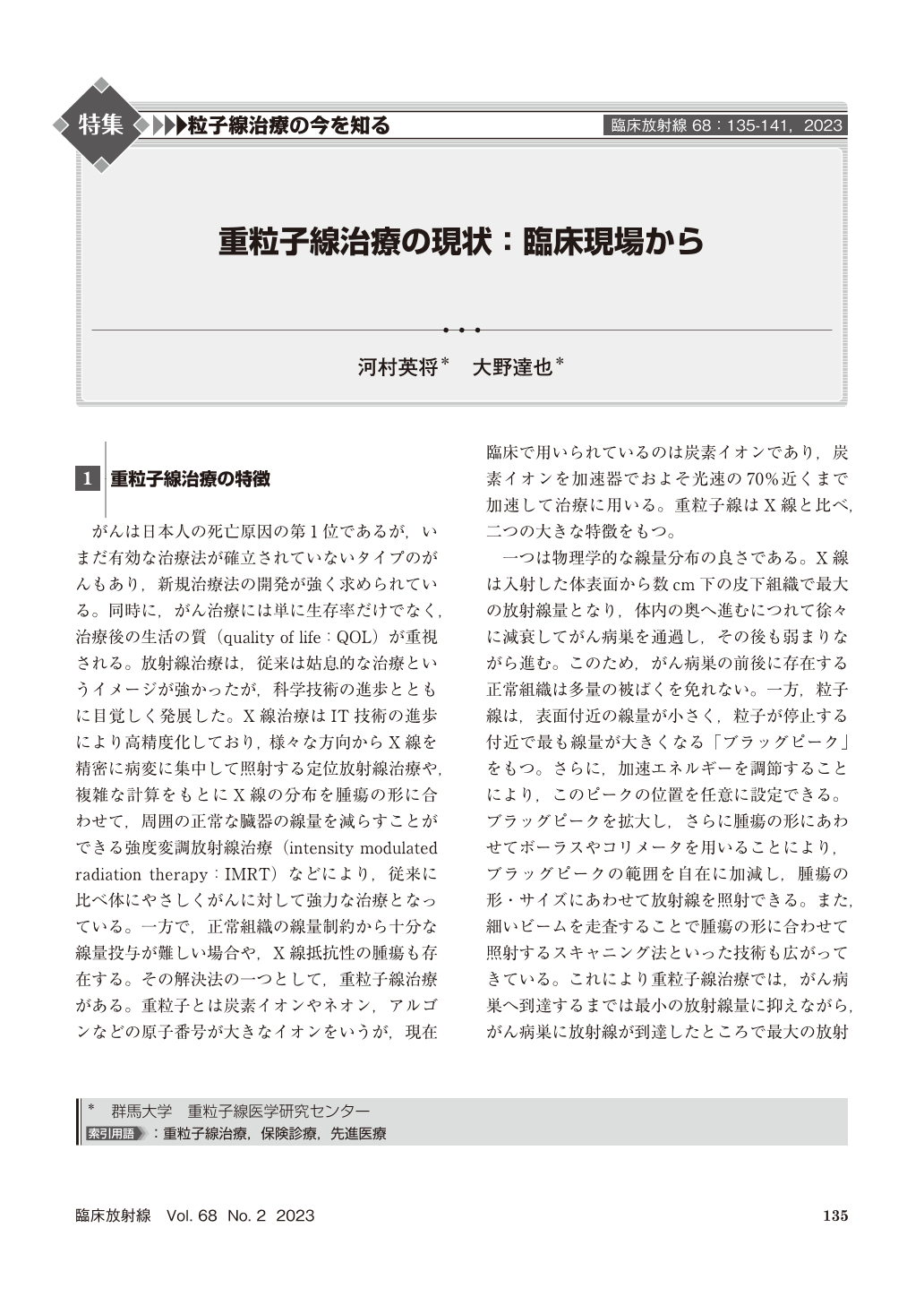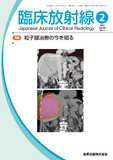Japanese
English
- 有料閲覧
- Abstract 文献概要
- 1ページ目 Look Inside
- 参考文献 Reference
がんは日本人の死亡原因の第1位であるが,いまだ有効な治療法が確立されていないタイプのがんもあり,新規治療法の開発が強く求められている。同時に,がん治療には単に生存率だけでなく,治療後の生活の質(quality of life:QOL)が重視される。放射線治療は,従来は姑息的な治療というイメージが強かったが,科学技術の進歩とともに目覚しく発展した。X線治療はIT技術の進歩により高精度化しており,様々な方向からX線を精密に病変に集中して照射する定位放射線治療や,複雑な計算をもとにX線の分布を腫瘍の形に合わせて,周囲の正常な臓器の線量を減らすことができる強度変調放射線治療(intensity modulated radiation therapy:IMRT)などにより,従来に比べ体にやさしくがんに対して強力な治療となっている。一方で,正常組織の線量制約から十分な線量投与が難しい場合や,X線抵抗性の腫瘍も存在する。その解決法の一つとして,重粒子線治療がある。重粒子とは炭素イオンやネオン,アルゴンなどの原子番号が大きなイオンをいうが,現在臨床で用いられているのは炭素イオンであり,炭素イオンを加速器でおよそ光速の70%近くまで加速して治療に用いる。重粒子線はX線と比べ,二つの大きな特徴をもつ。
Carbon ion radiotherapy has been developed mainly in Japan and has been used to treat a variety of cancers due to its excellent dose distribution and biological effects. After clinical trials in the Advanced Medical Care Program, many cancers are now covered by National Health Insurance. In this article, we review the physico-biological characteristics of carbon ion radiotherapy, its history including the medical care system, and the clinical outcomes of carbon ion radiotherapy for various cancers, as well as the current status and future challenges.

Copyright © 2023, KANEHARA SHUPPAN Co.LTD. All rights reserved.


